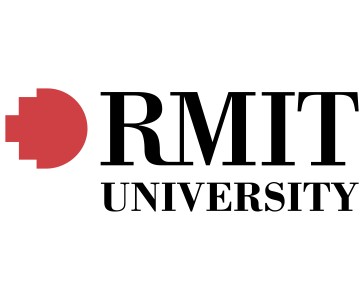
Our teaching, learning and research programs are continually updated so that students, staff and graduates are equipped to meet the challenges of the 21st century.
At the same time, we have not forgotten our past as one of Australia’s original educational institutions, and we have remained true to our original philosophy.
Since 1887, our inner-city campus has been a vital part of the City of Melbourne, from the 1880s boom through world wars, the Great Depression and renewed prosperity during the second half of the 20th century.
RMIT was awarded royal patronage by Queen Elizabeth II for its educational service to the Commonwealth and contribution to the war effort, and RMIT remains the only higher education institution in Australia with the right to use the prefix “Royal” and the Monarchy’s coat of arms.
During the 1990s, the institution gained university status and developed campuses in Bundoora and Brunswick in the city’s northern suburbs, and later in Ho Chi Minh City and Hanoi in Vietnam.
In 2013, RMIT opened a research and industry collaboration centre in Barcelona, Spain.
With significant teaching partnerships in Asia and Europe, as well as research and industry partnerships on every continent, RMIT has a strong global presence.
Information about a program can be found on the program page, via the program guide, or by contacting Study@RMIT.
If your program requires assumed knowledge or prerequisites for admission, it will be detailed under Admissions on the program page.
You can find out about upcoming intakes, campuses and study modes in the information summary at the top of the program page, or on the program plan page (found under "Choose program structure").
If your program is open for applications, or will be soon, you will be able to find application dates on the Apply page, which can be found via the top-right section of the program page. You can find out about upcoming program intakes in the information summary at the top of the program page.
Program outcomes, including career options and further study, can be found on the program page.
For career information, including potential job titles and/or industries and organisations can be found under Career, and further study opportunities, if available, can be found under Pathways.
To find out if a program is available for international students intending to obtain a study visa, select "Student type: International" in the information summary at the top of the program page.
Some programs are available for international students through online study only, which do not qualify for an Australian study visa. If this is the case, it will be noted on the program page.
Information about program duration can be found in the information summary at the top of the program page.
Some programs may include:
physical requirements
requirements for work-integrated learning (WIL)
security checks
minimum level of English language proficiency
compulsory online elements and/or work-based training
placements
other community-based learning, and
collaborative research training arrangements.
If a program does include particular requirements, they will be noted under the Admissions section of a program page, including Inherent requirements and Additional information.
Opportunities for credit, advanced standing and recognition of prior learning can be found under Pathways on the program page, or within RMIT's Admission and Credit Policy.
If you are undertaking a single course which provides credit to a particular program or offering, you can find out about this under Pathways on the program page.
If a program has been CRICOS-approved, the CRICOS code will be noted on the program page and the program plan.
If a key contact is available for a program, it will be noted under Key contacts in the Details section of the program page. If a key contact is not available for a program, reach out to Study@RMIT for more information.
The process for applying to a course at RMIT varies by level of study, and if you're a local or international student.
Find out how to apply to RMIT as a local student
Find out how to apply to RMIT as an international student
Ready to apply? RMIT’s standard closing date for receiving applications vary by level of study each intake.
Local student application dates
International student application deadlines
Please note, some courses have their own closing date and enrolments are subject to places and availability. As such, applicants are encouraged to apply as soon as possible.
International students are also strongly advised to apply by the dates recommended for their country/region. These maybe earlier than the closing date for your course and are based on anticipated visa processing times for each country. If you require a student visa, you will also need to allow additional time to apply for your visa.
For further information, contact us.
Find out about student and ATAR profiles on the Admissions transparency page.
This information can be found under Admissions on a program page.
Learn about RMIT's Indigenous Access Program.
Find out about RMIT's Equity access schemes.
Learn about RMIT's Elite and Emerging Athlete programs.
The Victorian Tertiary Admissions Centre (VTAC) is a hub for tertiary course applications in Victoria. VTAC receives, processes and forwards course applications to universities, TAFEs and independent tertiary colleges in Victoria (and a few outside Victoria). VTAC does not decide who gets into a course. All decisions about which applicants are offered a place are made by institutions. VTAC also processes special consideration claims through the SEAS application and some scholarship applications. VTAC’s other role is calculating the ATAR for Year 12 students.